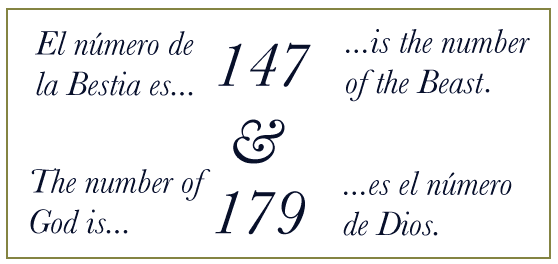
|
El número de la Bestia y el numero de Dios - The number of the Beast and the number of God - 147-179
ADVERTENCIA
Como una contribución a la higiene memética de occidente (Los memes son especie de genes o virus culturales), mostramos en esta página cómo matemáticamente se pueden develar dos memes gordos que han asolado la imaginación de judios y cristianos por miles de años. Esta es una página de humanos para humanos y consiste en un adelanto de contenidos de
999: El Libro del Número
Un planteamiento matemático con base pitagórica y de fundamentalismo andino para refunfar la humanidad, que será publicado en 1999.
Una de sus características es su carácter antidivino, ya que se demuestra en él lo absolutamente innecesario y perjudicial de las religiones.
Pedro Flecha
Mayo de 1999
El número de la Bestia
Resolviendo la trinidad
El número de Dios
YHWH o la sopa de letrasWARNING
This is a page made by humans for humans and gives a preview of the contentes of
999: The Book of Number This book , to be published in 1999 is a mathematical approach to achieve the refounding of humanity from a Pythagorical and andean fundamentalism basis.One of its characteristics is its antidivine character demostrating that religions are not only unneccesary but injurious to humanity
.
Pedro Flecha
May 1999
The number of the Beast
Solving trinity
The number of God
YHWH or the soup of letters
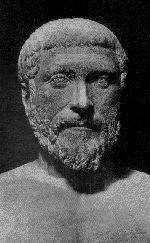 |
Las cosas imitan
al número
Pitágoras Things imitate number Pythagoras |
|
|
|
|
|
|
|
|
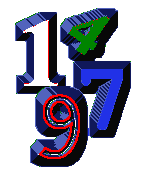 |
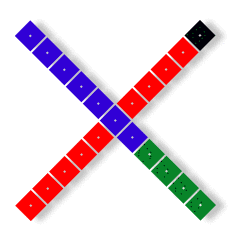 |
|
|

|
|
|

Sistema
planetario de Kepler - Sistema del Mono de Nazca.
Kepler's
planetary system - Nazca Monkey system
|
|
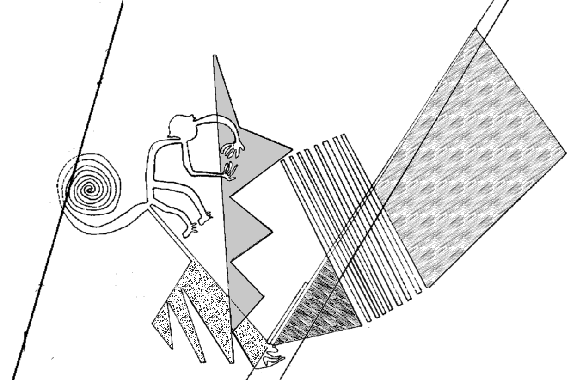
Teorema
matemático astronómico del Mono de Nazca (dimension 200 metros)
Nazca
Monkey Mathematical - Astronomical theorem (dimension 200 meters)
Todo explicado /All explained in
999:
El Libro del Número /
999: The Book of Number

| Hallando el
número de Dios (Según la Kabala judía) |
Finding God´s
secret number (According the Jewish Kabalah) |
||
|
|
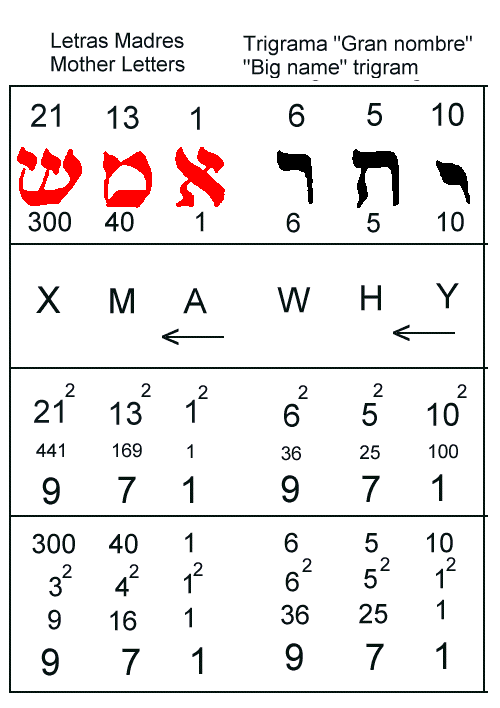
| Pero
no nos detenemos ahí.
Todas las letras hebreas tienen un valor que si lo sumamos nos dá 1,495. Es decir 1+2+3+4+5+6+7+8+9+10+20+30+40 +50+60+70+80+90+100+ 200+300+400=1495 Traduciendo esta cifra, dígito por dígito a números animados tenemos 1797. Si tomamos el famoso nombre YHWH, inpronunciable (con tantas letras me imagino lo será) encontraremos que también es 1797. Este nombre se ha considerado la "clave" de la Cábala. La verdadera clave es el sistema de números animados, que estará más extensamente en: 999 : El libro del número |

The soup of letters |
But
we dont stop here.
All Hebrew letters have a value. if we add all the values we get 1,495. 1+2+3+4+5+6+7+8+9+10+20+30+40 +50+60+70+80+90+100+ 200+300+400=1495 Translating
this figure, digit by digit to animated numbers we obtain 1797.
If we take the famous divinity name of YHWH, which is sait to be unpronounceable ( I bet it is with 22 letters), we will find is also 1797. This name has bee considered the "cue" of the Kabbalah. The real cue is the animated numbers system which will be in a more extended way in: 999 : The Book of number |


Fibonnacci series
|
|